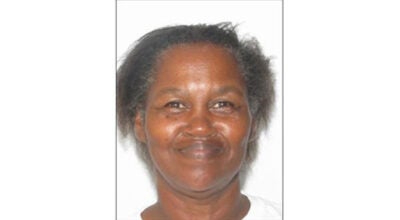English, math, grad rates trip schools
Published 9:25 am Saturday, August 21, 2010
RICHMOND—Ten public schools in area divisions fell short of federal Adequate Yearly Progress standards for the 2009-2010 school year, largely due to low scores in English and math, but also because a new method was used to calculate graduation rates.
Federal law requires that a school must achieve in 29 target areas across several subgroups of students — black, white, Hispanic, students with disabilities, economically disadvantaged, and limited English proficiency — to earn AYP status. Missing one these benchmarks could cause a school, or even an entire division, to not make AYP.
Schools made AYP if their students exceeded pass rates of 79 percent in math and 81 percent in English.
Isle of Wight County Schools
Isle of Wight County Schools spokeswoman Katherine Goff said a new statistic, the Federal Graduation Indicator, or FGI, affected every division and school in the state.
“This new statistic is different from the on-time graduation rate and other graduation rate factors that the state uses,” Goff said Monday. “FGI excludes modified diplomas, but that is included in some of the other calculations.”
She added that the AYP graduation rate requirement had changed from 61 to 80 percent. Windsor High School, with an FGI score of 74, was one of 41 high schools in Virginia that did not make AYP solely because of the graduation benchmark.
“Every single school and every division had to have a graduation rate of 80 percent in each subgroup,” Goff said. “Both of our high schools were very close. If you did not make the graduation rate, you needed to reduce the percentage of students not graduating by at least 10 percent.”
Smithfield High School had an FGI score of 82, but did not make AYP because only 78 percent of students with disabilities passed math.
“Our new strategic plan will look at improving our on-time graduation rate,” Goff said.
Two other schools in Isle of Wight also missed making AYP. Westside Elementary School fell short because its students with disabilities had a pass rate of 78 percent in English. At Smithfield Middle School, black students and economically disadvantaged students passed math at rates of 79 and 75 percent, respectively.
Franklin City
Public Schools
Although none of the three public schools in Franklin made AYP this year, Franklin High School was hit particularly hard because of its low FGI score, 63 percent.
Franklin High students also didn’t fare well in math. Only 73 percent of students overall passed math, while black students scored a 69 and economically disadvantaged students posted a 71.
Bev Rabil, the director of instruction for Franklin City Public Schools, said the division used funds from a 3-year federal school improvement grant to hire Annie Harmon as a cohort coach, and Shaun Howard as a cohort teacher.
“They will be working with ninth- and tenth-grade students,” Rabil said Tuesday of the cohort staff. “These are students that we will be providing some extra support to make sure we are addressing all of the pieces that contribute to graduation: attendance, academics, discipline and relationships.”
Rabil said the division would also be working with Dr. Donna Carr to formulate a long-term dropout prevention plan. She said Carr’s assistance would be funded through Mid-Atlantic Equity.
On the math scores issue, Rabil said the division plans to provide general and targeted professional development training to math teachers in the whole division, and will also work with math teachers on performing frequent student assessments.
“We have identified a set of strategies that we will be using in the classrooms universally,” Rabil said. “Each school will have teachers and administration at the central office jointly developing a plan to improve the math scores.”
J.P. King Middle School did not make AYP this year — and would be placed on a watch list — because of low scores in English and math. Black students passed math and English at rates of 66 and 80 percent, respectively. Only 70 percent of all students at the school passed math.
“We’re not in any official sanctions at that school this year,” Rabil said. “It takes two years to go into school improvement, and it takes two years to come out.”
For the second consecutive year, S.P. Morton Elementary School did not make AYP, falling short in English. Students as a whole posted a 78 percent pass rate, while black and economically disadvantaged students earned a 74.
S.P. Morton will now enter the first year of sanctions, also known as public school choice, over the low English scores. Rabil said the parents of at-risk students would be notified that they have the option to use supplemental educational services, or private tutors.
“We are required to ask neighboring divisions if they would take some of our students, but neighboring divisions typically don’t take another division’s children,” Rabil said. “So parents will have an opportunity to pick from a variety of vendors that will provide additional tutoring for their students.”
Asked if the numbers surprised the division, Rabil said no.
“We routinely analyze our data and try to stay on top of that,” she said. “Of course, we’re always hopeful. But when our initial data came in, it was a fairly good predictor.”
Southampton
County Schools
English was a bugaboo for the three schools in Southampton County that failed to make AYP this year.
Riverdale Elementary School failed to make AYP for the second year in a row since opening its doors in 2008. Students overall achieved a 74 percent pass rate in English, but only 61 percent of black students and 62 percent of economically disadvantaged students passed.
Although Riverdale failed to make AYP, the school did make strides in math. The pass rate among black students improved from 61 to 71 percent, and economically disadvantaged students’ scores climbed from 67 to 75 percent. Overall, 82 percent of Riverdale students passed math, compared to 77 percent last year.
At Capron Elementary School, only 63 percent of economically disadvantaged students passed English. Black students fared a little better with a 67 percent pass rate.
Southampton Middle School students also struggled with English, but math was a problem too. Both the black and economically disadvantaged subgroups posted a 72-percent pass rate in English, while 66 percent of students with disabilities passed.
Only 71 percent of black students passed math at the middle school, along with 73 percent of economically disadvantaged students.





